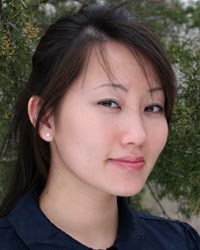The Latehomecomer Sparknotes
The Latehomecomer: Chapter 7. LitCharts assigns a color and icon to each theme in The Latehomecomer, which you can use to track the themes throughout the work. The Hmong refugees are in Tokyo airport, waiting for a plane to the United States. Kao looks around, taking it all in. The Latehomecomer Chapter 2 Summary. To get full document. To get full document. Yang’s mom is seventeen years of age and three months pregnant when the gathering is trapped by North Vietnamese and Pathet Lao troopers. Sincerely busy setting up a morning meal, the perplexity of abrupt discharges, smoke, and bombs isolates every family.
Book: The Latehomecomer
Topics: Summary
Access Full DocumentPlease Sign Up
to get full document.
Please Sign Up
to get full document.
Safe on the Thailand side of the Mekong Stream, in Nong Khai, Yang’s mom, father, and grandma stroll along the riverbank to locate different individuals from their family. Be that as it may, Uncle Chue and his family didn’t make it since they were gotten by Pathet Lao officers while endeavoring to cross the stream. Yang’s grandmother is crushed and requests that her expired spouse take her child back to her. The family concludes first to scavenge for nourishment, and afterward to devise an arrangement to spare Uncle Chue. Subsequent to strolling for a short separation, the gathering is spotted by ranchers.

Yang’s dad is almost stripped, and a rancher tosses an old shirt and shorts at him. Yang’s mom can’t remain to watch since it is excessively disgraceful. The gathering is then met by Thai officers who address them in Laotian, calling them “opoyop, or individuals escaping for a home” (43). The officers disclose to them that they can enlist as displaced people with the Assembled Countries, yet that the nearest exile camp is right now full. Therefore, rather than resting, the gathering must keep strolling towards the UN compound for enlistment.
During the short walk, ranchers gaze at the gathering as they pass and cause Yang’s mom to feel embarrassed about her conspicuous destitution. The officers stop the gathering before a lovely home and offer them plates of rice and dried fish. They at that point take a transport for the remainder of the excursion. The UN compound is encompassed by a tall wire fence. The officers reveal to Yang’s family to leave the transport and enter the entryway of the compound, however Yang’s dad stands up to. A fighter punches him in the stomach, and afterward kicks him.
Rather than hitting the fighter back, Yang’s dad finds a workable pace he doesn’t need his significant other and mother to see him on the ground. Yang’s dad reviews how his “heart hurt more than my body—the substance can take blows, the heart endures them. It was the first occasion when I felt that there would be no other spot like Phu Khao, the town where I was conceived” (44). The UN laborers are away for the afternoon, so the gathering is secured in the compound for wellbeing. Without nourishment or comfortable garments, the gathering sits along the mass of the structure medium-term, in overwhelming precipitation.
The air is thick with mosquitos that continue swarming child Dawb. Yang’s mom drinks downpour water with the goal that her milk supply will increment. Toward the beginning of the day, a gathering of Thai locals look at Yang’s family from past the fence. The townspeople point and jab at Yang’s family, yet the family is excessively worn out and tired to react. The UN laborers show up, and Yang’s relatives remained in a line “while the UN individuals, all Thai, composed their names on paper, gave them numbers that would supplant their names, and requested their birthday events” (45). Since the Hmong don’t keep set up accounts, every relative gauges a birth date for themselves.
The gathering at that point takes a transport to So Kow Toe, a camp that briefly houses outcasts until they are forever set. So Kow Toe is confined and possesses a scent like excrement. The white Hmong and the green Hmong, individuals who recently lived in independent enclaves, are presently living respectively just because. Yang’s family remains right now multi week, dozing on the hard ground and drinking one spoon of watery soup a day. Before being moved to an increasingly perpetual displaced person camp, Yang’s family is briefly moved to the Nong Khai exile camp. This camp is cleaner, and they can remain with a relative in his hovel.
Before moving to the Boycott Vinai Displaced person Camp, their last goal, the gathering returns to So Kow Toe, where they are brought together with Uncle Chue. Uncle Chue recounts to the story that fighters had caught him and his family, however that he made them feel that he could be changed as a socialist. Subsequently, they let him and his family live. Subsequent to rejoining with their kids, Uncle Chue and his better half convince a Thai man to take them over the Mekong Stream. Subsequent to going through two days in cheerful gathering with Uncle Chue, the family takes a transport to Boycott Vinai Evacuee Camp.
Book: The Latehomecomer
Topics: Prologue, Summary
Access Full DocumentPlease Sign Up
to get full document.

The Latehomecomer Sparknotes Summary
Please Sign Up
to get full document.
From 1980-1987, Kao Kalia Yang accounts her developing way of life as a Hmong individual living in Thailand, a land that is threatening to the dislodged Hmong individuals. Being conceived in the Boycott Vinai Displaced person Camp, Yang stresses the significance that her family puts on understanding the Hmong legacy. Before she can even talk, the grown-ups around her continually disclose to her that she is Hmong. In January of 1987, Thailand begins shutting its evacuee camps.
The American government is happy to take any Hmong individuals who breeze through a test “expressing they had battled under American initiative and impact during the Mystery War in Laos from 1960 to 1975” (2). In anticipation of this transition to America, Yang and her family go to the Change Camp to America where the grown-ups take English classes, eat American nourishments, and dress in American attire. Seeing her family bid farewell to their legacy causes Yang to comprehend what it really intends to be Hmong.
The Latehomecomer Questions
As she “watched the distracted grown-ups around her getting ready for another life, attempting to end a longing for an old one that she didn’t have the foggiest idea—she perceived how their eyes scanned the separation for the shadows of mountains or the wide, open sky for the rainstorm, one final time before it was gone always” (2). She describes how the Hmong individuals never had their very own nation and were constantly driven away from places behind. From the outset the Hmong lived in China, however the Chinese removed their language and attempted to oppress them.
They at that point moved to Laos, however the Vietnam War happened, bringing about 66% of the Hmong populace being slaughtered and the rest stowing away in the wilderness or making due in displaced person camps. In 1987, Yang moves to St. Paul Minnesota with her family. There are no hints of Hmong culture or history in America, and therefore she feels as though the Hmong inside her has fallen quiet. This is the reason she is keeping in touch with her journal, to offer voice to the Hmong story.
